The power source in welding production remains one of the most important components on which the efficiency and quality of the entire workflow depends. This is especially true for methods that require the use of piece electrodes, through which the electric arc thermal effect is implemented. The optimal solution for energy support in this case would be a welding transformer - it is quite simple in its design, but at the same time a reliable and inexpensive source of energy supply.
Device device
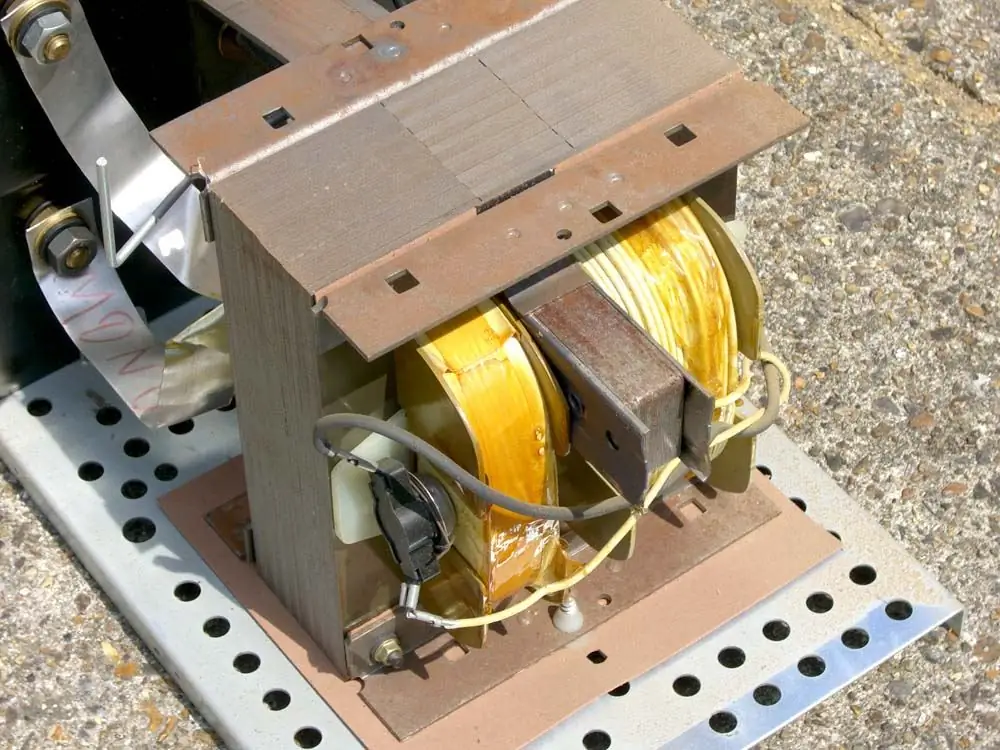
A typical transformer is based on a metal core with thin wire windings (aluminum or copper). Windings have two levels - primary and secondary. Accordingly, one winding is connected to the mains supply, and the secondprovides energy to the electrode. The primary level is formed by two coils fixed at the bottom of the core. As for the secondary winding, it is also formed by a pair of coils, but it is also possible to move it relative to the core. From the point of view of an external device, a welding transformer is a metal box that has a wide infrastructure for electrical connection. As a rule, the device also provides means of protection, protection against short circuits and leads for connection with grounding elements. For convenient work with the transformer, the design also includes handles, ergonomic controls, and, in the latest models, digital control panels.
Operation principle
It follows from the fact that the main task of such devices is to convert energy for the subsequent power supply of the welding working equipment. Getting to the primary level of the winding, the initial current is converted into electromagnetic energy, after which it enters the secondary winding. During this transition, the voltage indicator is reduced. The action of this regulatory principle of the welding transformer is due to the design features of the coils. Since there are fewer turns on the second winding, when current enters it, the excess voltage is removed to the required level. In other words, the normal mains current is transformed into welding current. Of course, the value of this correction is conditional, since there is no clear concept of the current required for welding. The operator can adjust the clearancebetween the coils, thereby adjusting the characteristics to the desired value in accordance with the task being performed.
Transformer current value
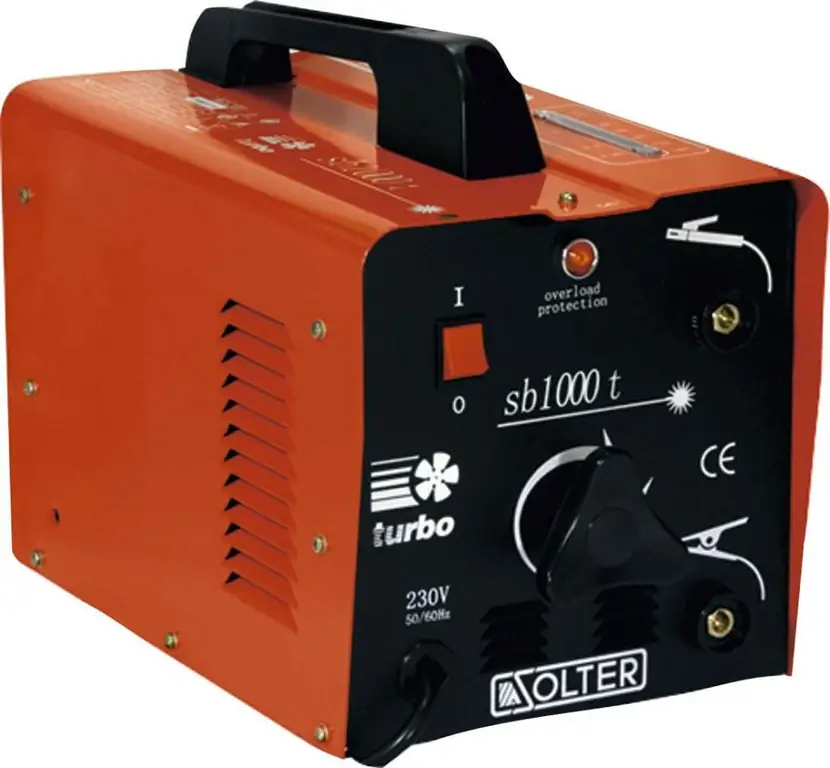
There is a direct dependence of the possibilities of heat treatment of metal products on the applied current. The thickness of the electrode is usually used as the design parameter. The average range is 5-10 mm. Such electrodes can be used in welding of load-bearing structures with gratings, frames and thick rods. In this case, the current strength of the welding transformer can be 140-160 A. This is the optimal value for medium-sized work operations, in which, by the way, not only power is important. For example, the same current level during the operation of small devices with rutile electrodes up to 10 mm thick will not so much provide power support for the thermal charge, but will determine the stability of the arc. In some cases, an increase in this indicator also contributes to easy removal of slag.
Power transformer
The power range on average varies from 2.5 to 20 kW and more. What does this characteristic of a welding transformer affect? Contrary to popular belief, power in this case does not indicate the ability of the equipment to work with certain workpieces. As noted above, performance is more dependent on current strength. However, power determines the energy potential of the device in terms of the ability to serve certain tasks with the connection of power.current of a specific value.

As an example, consider one of the most powerful professional welding transformers on the Russian market - TDM-402 from Ur altermosvar. Its power rating is 26.6 kW. It is thanks to this value that this converter allows you to work with a current strength in the range from 70 to 460 A. It is obvious that the voltage requirements are also growing - a three-phase 380 V network is used. What does this give in practice? The device allows you to work with intense loads with increased current strength in long time sessions. If we were talking about similar performance, but with less power, then in the process of performing the same operations, the equipment could overheat and, in principle, not maintain sufficient performance.
Voltage readings
Roughly speaking, the entire range is conditionally divided into models operating from single-phase networks, and devices connected to three-phase power supply lines, as is the case with the TDM-402 version. Accordingly, the former operate under a voltage of 220 V, and the latter - 380 V. Obviously, a single-phase network is less demanding on power and covers the resources that are involved in small operations. Such models are more suitable for garage-dacha work. However, there is an intermediate group of devices with "floating" voltage. Welding transformers of this type can be connected to both types of networks. Moreover, this feature is important for both ordinary users and specialists. It is evennot so much about versatility, but about the benefits that the ability to work from different sources provides. For example, if there are two networks, the owner of a device with nominally small characteristics will benefit from connecting to a 380 V network, since there will be no power surges against the background of a balanced load distribution. As for the owners of professional equipment, in their case, connecting to a single-phase network will be more profitable when operating at a minimum workload.
Load duration
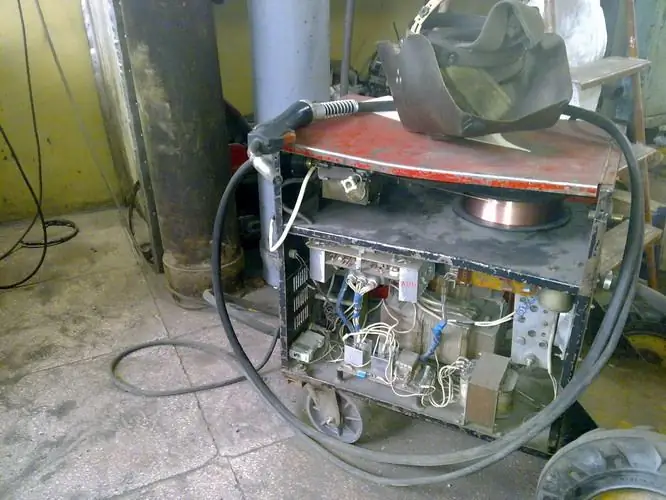
The Load Duration Factor (DL) indicates the ability of the machine to operate for a specified period of time without needing to be switched off. Shutdown refers to a forced interruption due to overheating or electrical overloads. The load time of a welding transformer is a percentage value representing a fraction of the working time of a 10-minute interval. In other words, how many conventional minutes can a particular device work without stopping out of 10 minutes. The MO range varies from 10 to 90% depending on the model.
But is PN 100% possible in principle? Is it worth it to look for such devices? This is impossible, and even high rates of 70-80% are considered by experienced welders to be a marketing ploy, since in any case, work under overload conditions will sooner or later lead to malfunctions in one or another part of the structure.
Functions of modern welding transformers
Manufacturers of this equipment strive to think through ergonomiccontrol systems, which provide wide means of setting and adjusting operating parameters. The basic function of this type is the ability to smoothly adjust the AC power using the controller on the user panel of the welding transformer. The same applies to the choice of the active phase of the voltage - 220 or 380 V. For convenient tracking of the current state of the workflow, indicators of overheating, operating temperature and overvoltage are provided.
Features of professional transformers
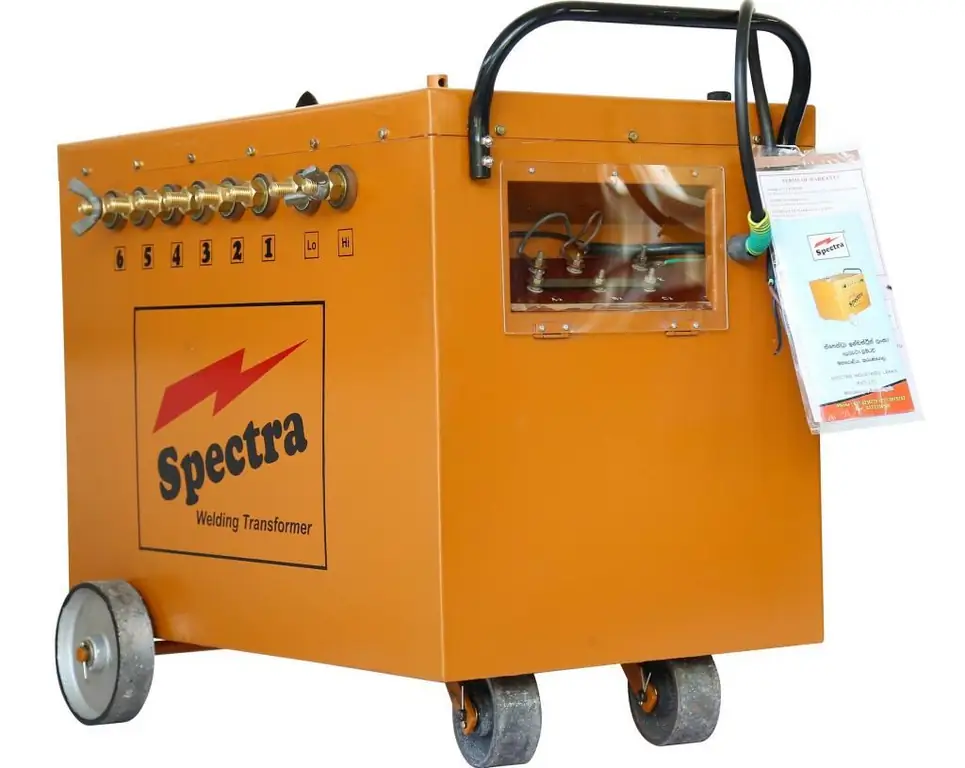
This type of auxiliary welding equipment is designed for increased loads, and not only electrical ones. The designs of such devices include several levels of structural protection that prevents the penetration of dirt, dust, and sometimes water, although in principle it is forbidden to use such devices even in conditions of high humidity. As for electrical indicators, they are expressed in the ability to connect to three-phase networks and wide ranges of current settings. For example, the welding transformer "TD-500" nominally operates at 500 A, and in practice the adjustment allows reaching 560 A. On the other hand, the base level does not fall below 100 A, which limits the possibility of using the unit in small welding operations. The disadvantages of industrial converters also include massive design and high energy consumption.
Features of Universal Welding Transformers
Mostwelding work is carried out using electrodes, the thickness of which varies from 2 to 10 mm. This is especially true for workshops, where welding is used to fasten metal elements of various sizes. The best choice to support such tasks would be a universal machine. In the process of operation, a welding transformer of this type will be able to provide the possibility of high-quality penetration with thin materials and to connect thick workpieces without overestimating the power and energy resources. What is also important in such models is the variety of accessories, the set of which is also focused on the production of welding in various conditions. At a minimum, these kits include holders, grounding tools, slag brushes, and even personal protective equipment.
Pros of transformers
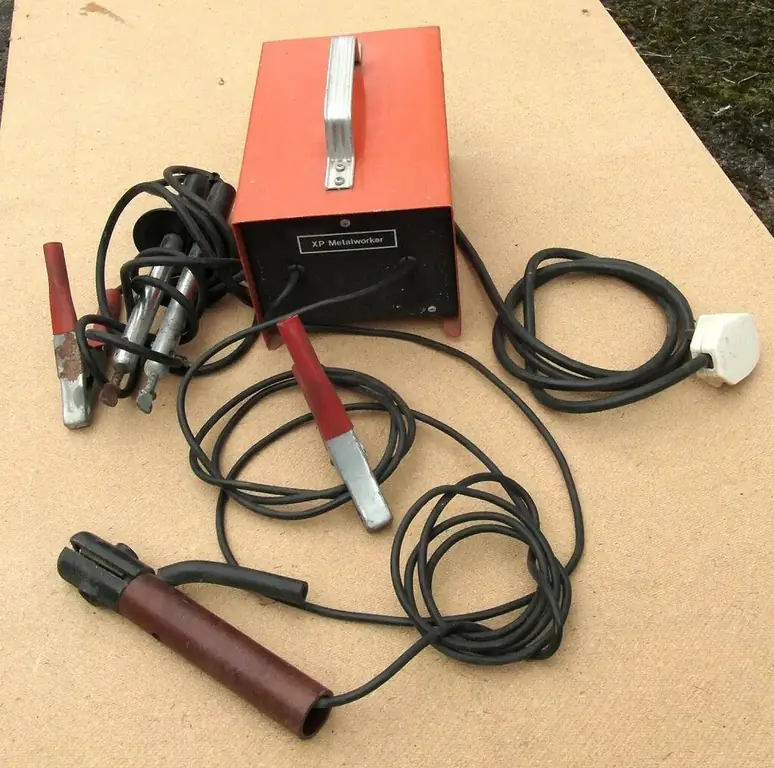
It is possible to organize welding work without a transformer, but in this case the obvious advantages will be missed. The main one is the possibility of not only convenient, but also precise adjustment of the current strength, which is very important for those who regularly face the need to connect metal parts. Moreover, a high-quality welding machine-transformer has a high resistance to loads of various kinds, and its efficiency is about 80%. Also, in terms of energy consumption, such an assistant is more profitable than most alternative solutions for manual welding.
Cons of transformers
Like any transitional link in the technological process, a third-party convertercurrent in welding has many disadvantages. These include organizational costs, arc instability and high requirements for the qualification of the welder. The percentage of sprayed melt also increases, which also necessitates stripping in the working area.
Can I make a transformer with my own hands?
The problem is in principle solvable, but it is important to keep in mind that the maximum voltage for home-made devices is no more than 50-60 V, and the maximum current rarely exceeds 160 A. There is nothing complicated in the assembly itself if the master has introduction to the basics of radio engineering. The main task is to make coils with two windings and choose the right magnetic core. For coils, it is desirable to use copper wire with a cross section of about 4-7 mm2. It is advisable to make a do-it-yourself magnetic circuit for a welding transformer according to the type of a core made of electrical steel - plates with a thickness of 0.4-0.5 mm are suitable. This task can be facilitated by taking a ready-made core from an old transformer. This part is usually stored in a ready-to-work state. The next step is to connect the system. The first winding, as in the case of the general circuit, is directed to the network, and the second is located nearby. The next step is to properly insulate. It is undesirable to use winding PVC film as a dielectric. Lakotkan or fiberglass is best suited for this.
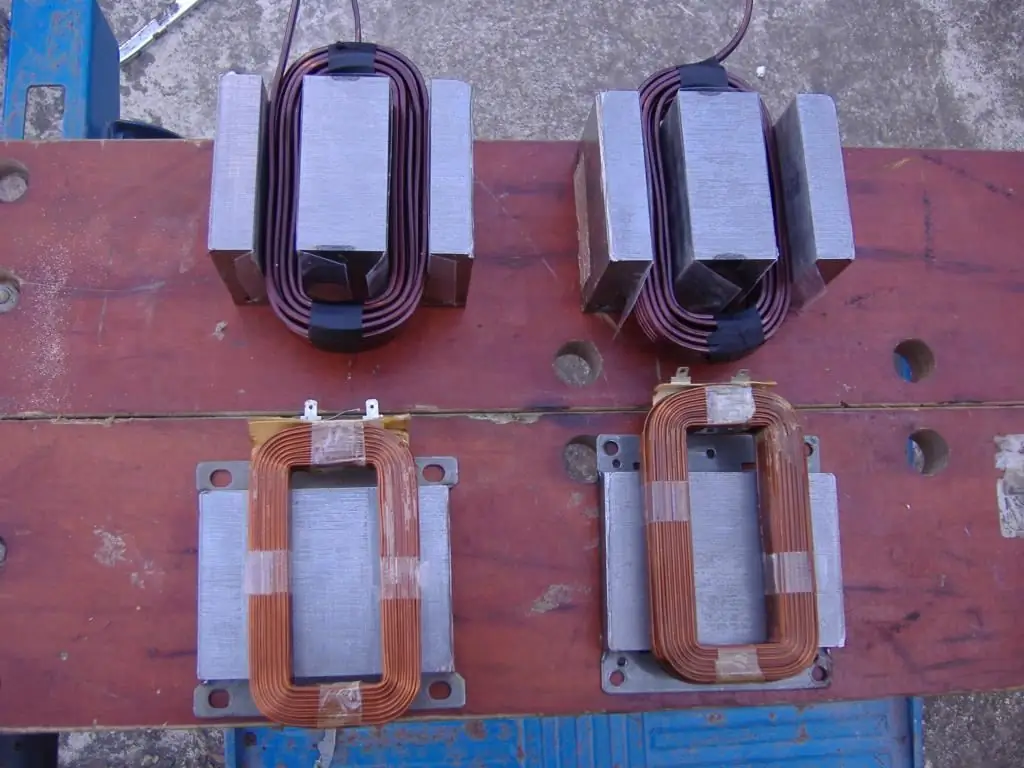
Conclusion
A correctly selected transformer will be a good help in any welding production. Todayespecially domestic equipment of this type retains the principles of ease of operation, technical and structural simplicity and versatility. A typical example of this is the same TDM-402 welding transformer, which is inexpensive compared to foreign analogues - about 60 thousand rubles. Given the working possibilities, this is quite an acceptable option. Of course, there are many other worthy offers of the same class and functional level on the market. In this case, in each case, it must be taken into account that the transformer still requires certain skills in welding production from the performer. This requirement distinguishes it from the inverter.






